Roundtable |Turkey
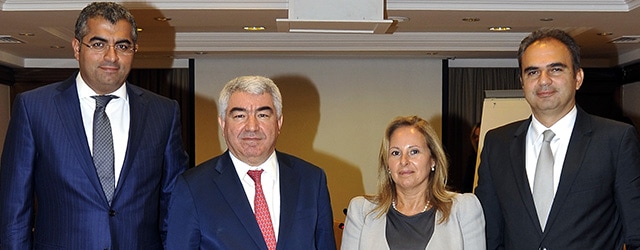
MEET THE PANELISTS
At a roundtable in Istanbul in September, leading figures from Turkish banks, including the deputy governor of the Central Bank of Turkey, came together to discuss developments in the economy and financial sector.
Global Finance: Can you explain how the Central Bank of Turkey’s monetary policy with respect to credit and price stability has changed following the 2008 global financial crisis?
Dr. Turalay Kenç, deputy governor, Central Bank of Turkey: The Turkish economy rebounded quickly from the global financial crisis, recording between 8% and 9% annual growth during the years 2010 to 2011. But these high growth rates raised financial stability concerns as the current-account deficit increased to 10% of GDP. As a result, the Central Bank of Turkey opted for a different kind of monetary policy, which had, basically, two objectives. One was price stability and the other objective was financial stability—to address the challenges posed by volatile capital flows, which were an issue for us in the post-global-financial-crisis era. Since then we’ve used several macroprudential measures and targeted the credit growth rate, which was quite high during those years—around 35%. The policies undertaken initially brought the credit growth rate down to 25%, and now it’s 15%. In the meantime, Turkey formed the Financial Stability Committee, which is charged with the responsibility of taking decisions on macroprudential measures.
Within this setup the use of macroprudential measures or monetary policy very much depends on volatility in the exchange rate market. Since the beginning of May 2013, when the US Federal Reserve started to talk about the tapering of large-scale asset purchases, the Turkish lira has, more or less, been depreciating. Therefore, we have maintained a tight monetary policy stance since then. The macroprudential policy stance has tightened, too.
The Federal Reserve tapering has been quite interesting for the appropriate monetary policies in emerging market economies. Initially, we implemented a monetary policy in order to reduce the volatility coming from global financial markets into local markets. The policy was quite successful in doing that from May 2013 until December 2013. But in December 2013, domestic political developments led to further uncertainty in the Turkish financial markets, generating significant pressures on the currency. We acted quite strongly by raising interest rates significantly. Since then, financial conditions, both at home and globally, have improved, and as a result of that we’ve cut the policy rate. But because of strong exchange rate pass-through effects, we have a price stability issue on our hands. We will therefore maintain the current tight monetary policy stance until there is a significant improvement in the inflation outlook.
Selim Çakir, chief economist, Türk Ekonomi Bankasi: What is worrying the markets is that we are having close to double-digit inflation when global commodity prices are relatively moderate and domestic demand is more or less stagnant. It’s not only headline inflation that is close to double digits but also several subcomponents of inflation, such as service prices. But inflation is not the central bank’s only problem. More needs to be done by other actors. Maybe Turkish society as a whole needs to acknowledge that we really should move toward a rate of inflation of 5% for the country. But the consensus doesn’t seem to be there.
Serkan Özcan, assistant general manager and head of economic research and strategy, Odeabank: Since 2010 we have seen a change in rhetoric from the Central Bank of Turkey. Targeting financial stability with price stability is a major change, and actually it’s the end of the transition from the strong economy program to a sustainable growth program. We don’t want high growth rates, which are not supported by high external demand, or at least, positive external demand. So after 2010, our main target was not government or private consumption but rather balancing internal demand with external demand so that we can grow and don’t have a current-account deficit, which may be harmful not only to the overall growth model of Turkey but also to the financial system as a whole. For me, getting an investment-grade rating by at least two of the big rating agencies is very much related to what the central bank achieved by putting financial stability in their monetary policy framework.
Aye Meltem Aci, general manager, Oyak Yatrm Menkul Deerler: One of the most important problems of the Turkish economy is productivity and the lack of sufficient savings. Why can’t we increase the size of the capital markets? Because we don’t have enough savings. And on the productivity side, we have grown a lot in the last five years, around 7%. But from which sectors did we have this growth? As the latest discussions are about whether to boost the industry sector versus the construction sector, that’s really a very important question, because that’s the core problem of our current-account deficit. We have a deficit and we have exports, but how much of our imports are we using to produce our exports? On the savings side, Turkey is looking to establish Istanbul as a financial center. But the number of equity owners in Turkey has not increased at all since 1980. Pension funds are the only funds that are increasing in size and in the number of participants in Turkey. We have to attract more domestic investors into the system to boost the financial markets.
GF: The other issue going forward is that quantitative easing had a tough impact on markets like Turkey. How has that affected monetary policy?
Kenç: The current-account deficit has two components—the structural component, which is very important, and the cyclical component. On the structural component there has been a range of structural reforms. Most of them were drafted in Turkey’s 10th five-year development plan. One of the key reforms was an objective to bring the domestic savings rate from its current rate of 14% to 19%. With that sort of savings rate the Turkish economy will be in a better structural position, and the current-account deficit will be lower.
Coming to the cyclical component of the deficit, with advanced economies reaching the peak of the financial cycle, Turkey is at a different position in the cycle. Therefore, Turkey has to rebalance domestic and external demand. For example, European economies have not grown much in the last five to six years, which didn’t help Turkish exports. That weakness in Europe contributes cyclically to Turkey’s current-account deficit. The Central Bank of Turkey had to act and deal with the cyclical problem stemming from the unbalanced aggregate demand in the Turkish economy—weak external demand and strong domestic demand. But at the same time the central banks of advanced economies, including the Federal Reserve, the Bank of England, Bank of Japan and the European Central Bank, have pursued unconventional monetary policies, which in turn led to substantial increases in global liquidity. This has created easy borrowing conditions for emerging market economies in global financial markets, which, in turn, led to increased domestic borrowing and domestic demand.
Now, the latest move is going to be easing by the European Central Bank, so we may see the impact of that on emerging market economies. It should be expected that it may lead to borrowing in European financial markets, because there will be lower interest rates together with a depreciating euro, which is attractive for borrowers..
Çakir: Even if we correct the deficit and take it, for instance, from last year’s 8%, it’s very difficult to bring it back to normal. Today maybe the dilemma that we are facing is that Turkey still has a high current-account deficit despite a slow growth rate. The current-account deficit may come as low as 5% of GDP this year, but it may be slightly higher than that if we grow next year as well. Of course, we don’t know what will happen with oil prices. We’ve been defensive for the last couple of years. We didn’t push our growth rate excessively high, but still we will be caught with a relatively high external financing need. Now if the ECB and the Bank of Japan continue with their quantitative easing policies, then that would possibly mitigate the impact of a US Federal Reserve rate hike cycle on emerging market countries. But the US dollar is still the dominant currency, so it will be the dominant factor. Looking at the next couple of years, the external financing environment could be a bit more binding for Turkey, so we may—even if we wanted to stimulate our domestic demand with looser policies— not be able to do so.
Özcan: What we saw in 2010 to 2011 was a very high current-account deficit. But at the same time we knew that with the high levels of global liquidity and very loose monetary policy, our buffer for the deficit was very high. Today it is not sustainable to have an 8%, 9%, or 10% current-account deficit. That’s why putting financial stability in the monetary policy framework is important. In the second quarter of this year, Turkey’s saving ratio reached 14%. That helps, and if you compare last year’s January-to-July period with this year’s, the deficit dropped by 38%. Five percent [of GDP] is a good number for the deficit. If we can reach that, the global economy and all liquidity conditions will still be supportive for Turkey.
GF: Are there voices calling for a less-tight monetary policy stance in light of what’s happening on the growth side?
Kenç: On the growth side, prospects have been quite positive in the last five quarters, except for the last quarter where the GDP growth rate dropped to 2.1%. But if you look at the leading indicators, there are positive signs on the growth side again in the coming quarters. So overall, while Turkey may not achieve a 4% growth rate at the end of this year, it will be somewhere in between 3% to 4%, which is quite reasonable. Turkey needs balanced growth because of some flow balance problems the economy has in the area of price stability and the current-account deficit.
Aci: There is some debate about the middle-income trap in Turkey at the moment. The government is taking some steps to boost growth, but of course, exports have had great shocks lately from the political risks around the world, and our export partners are at war. Therefore, the expectation that growth will be a bit less than it was in the last few years is not unusual. There will be a balance between interest rates and growth rates, and it won’t hurt the economy too much in the coming six months.
Çakir: Turkey is not used to having a sustained period of low growth. We used to have our recessions, quick recovery in a quarter or two, and then strong growth rates. As we enter into next year, it could be a bit more challenging in a US Fed rate- hike cycle to sustain growth of 4% or more. If we don’t see a growth level that is acceptable, then the discussion on interest rates will come to the forefront, and of course there are certain circles that believe that by lowering rates or that by a more depreciated exchange rate, we will solve Turkey’s problems. However, it is not that easy. There’s a limit as to how much we can stimulate economic activity through exchange rate depreciation.
Özcan: As compared to the last five years, we will have a normalization in the world. So one should not be expecting the same amount of growth, not only for Turkey, but for most of the emerging market countries. It’s not only the interest rates or short-term currency movements which can rebalance and contribute to growth. From my point of view, as a banker, we all know that effective rates or monetary policy rates for Turkish banks or the Turkish banking system are much higher than 8% to 9% right now. As a result of banking regulation, we are carrying 400 basis points more capital than any banking system in the world. So we cannot just say that interest rates are low or high just by looking at the monetary policy stance. Turkey is applying tight monetary policy by using short-term interest rates plus macroprudential tools. So we have room, I believe, other than in the area of interest rates, to grow more. But again, the problem is how to rebalance.
GF: What are some of the challenges for the Turkish financial sector going forward?
Aci: Around 65% of the Turkish capital markets are dominated by the top five or six banks, so this kills competition, and it doesn’t help the growth of the markets. I don’t see any other market where there is such an oligopolistic structure in the world. Around 70% of all the mutual funds are owned by five banks. The pension funds are increasing, but they are also increasing through the five or six highly-branched banks, and they are managed by their own portfolio companies and supported by their own brokerage houses.
Özcan: As compared to many metrics for banking systems, Turkey is in much better shape than most of its peer countries, and even by comparison, equal or better than most of the developed market countries too. When you compare the technological advancements of the Turkish banking system with some developed markets, you could definitely put Turkey in the developed market rather than the emerging market basket. But let’s talk about the challenges. The main challenge, again, is the saving deficit problem. We are growing our coverage by 25% on the loan side and 15% on the deposit side. So every year, we have a deficit of 10% or more in funding, and this is coming in the form of home state funding from our European and American partners.
Right now, the loan-to-deposit ratio has reached almost 130 percentage points, which is not sustainable. This is the biggest challenge for Turkey that requires more contributions from international banking systems, the Turkish banking system, and also higher saving ratios for Turkish financial markets.
Another thing is how to make Turkish banks attractive to international investors. That’s only possible with strong bottom-line profitability. Right now, what we are talking about in Turkey is how to use more banking policies to cap domestic demand. As I said, we are carrying 400 basis points more than what we need as a capital base. Basel III requires you to have a base capital ratio of 9.5%. In Turkey, the minimum level is 12%, and on average it’s 16.3%. Having a more stable financial system is only possible with a high cost to the banking system. We have to balance banking policy pressure while still ensuring banking is attractive in the market place.
Çakir: One major strength of Turkey is its strong banking system. Turkish banks’ strong capital base and supervision remains one of our key strengths. That brings us to the issue of the continuation of profitability of the banks. We are seeing a decline in the return on equity, and that is partly as a result of the macroprudential measures. If profits don’t grow, then the banking system’s ability to give credit over time declines.
Kenç: The high current-account deficit basically led to increases in the loans-to-deposits ratios for the Turkish banking system. But we are working on the external deficit problem, and we are also specifically working on the banking system’s high loans-to-deposits ratios.
GF: What is the attractiveness of Turkey to foreign investors, and has it changed?
Aci: Turkey is still attractive because there is growth potential in the country. It has a very entrepreneurial history, unlike the emerging economies in Eastern Europe. There’s strong corporate governance. There is also a proper auditing system, which attracts both financially and on the compliance side, investments to Turkey. And of course, at a time when the cost of acquisition finance is low, people are more encouraged to buy more in emerging market countries.
Özcan: We don’t have a problem of attractiveness, but one thing I would like to mention is that in the last two years, unfortunately, Turkey has given some wrong impressions to international investors. It is a small part of the problem, but the bigger part of the problem is overall investor perceptions about Turkey have changed dramatically. That requires urgent intervention, not only by government or public authorities but also the private sector. With this new government program led by our prime minister, we are focused again on European Union membership. I see this as an effort to change negative investor perceptions of Turkey by approaching more international standards.
Kenç: There are some problems related to the global economy. One of those problems is very low productivity everywhere. Secondly, there used to be a relationship between global trade and global growth—that relationship collapsed in the last couple of years. The other problem, as a result of low productivity and the global growth performance, is investment. Investment is a problem both in advanced economies and emerging market economies. With respect to foreign direct investment flows to Turkey, we don’t have an attractiveness problem. It is more to do with the source country than the recipient country. Our major providers are European economies, but they are not having good times in their economy, so that’s having some impact on FDI flows to Turkey.
GF: There were statements made by Fitch on the risk going forward for the Turkish economy. To what extent do you consider the possibility of another negative outlook or even further down the road, a downgrade?
Özcan: I can’t see any economic, social or political changes that will require ratings agencies to make negative changes to their outlook or ratings.
Kenç: One problem of the Turkish economy often highlighted by the rating agencies is external imbalances. Overall, the leverage level in Turkey is not that high. It is around 130%, which is quite reasonable, compared to other emerging market economies. External liabilities with respect to GDP are around 50%, which is also reasonable. The problems we are talking about are therefore flow balances. The important point is whether Turkey will continue on containing the current flow balances problems we have or not. In this respect, we can safely say that the current policies are well designed against any contingencies in flow balances.
Another highlighted specific external liability problem is nonfinancial-sector FX liabilities. The total FX liabilities of the nonfinancial sector are around 35% of GDP. Eleven percentage points to 12 percentage points of that is directly borrowed from outside, and the remaining 23 to 24 percentage points are borrowed from Turkish banks. The second point is whether those liabilities are short- or long-term. The maturity of those liabilities has been lengthening, which is pleasing. Thirdly, you need to look at whether there are any systemic risks that affect those liabilities or not. Again, we looked into that, and there is some concentration in certain areas, but it’s a mild problem.
Çakir: The challenge will be next year to convince these agencies that Turkey deserves to move back to a stable rating, and plus maybe an upgrade in the following years, while in the meantime avoiding a road accident, so that these outlooks don’t turn negative. In addition to maintaining a tight monetary policy, maybe we need to develop a new Turkey story, with the government looking towards the EU and structural reform so that we can change investors’ and the rating agencies’ perceptions.
MEET THE PANELISTS
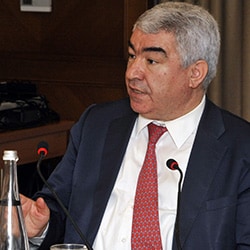 |
Dr. Turalay Kenç is deputy governor at the Central Bank of the Republic of Turkey. He received a PhD in economics from the University of York, England. He worked at several UK universities, including the University of Cambridge, Birkbeck College, University of London, the University of Durham, and Imperial College London in different capacities. Before joining the central bank he was professor of finance at the Bradford University School of Management. Dr Kenç, who was appointed a member of the central bank’s monetary policy committee on May 7, 2009, has acted as deputy governor of the bank since April 29, 2011. |
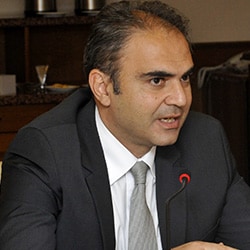 |
Selim Çakr joined Türk Ekonomi Bankasi in 2008 as chief economist. He also covers Turkey and GCC research for the BNP Paribas Fixed-Income Group. During a tenure of 10 years, Çakr has held various positions at the International Monetary Fund, where he worked on the Middle East and on transition economies in Central Asia. He represented the government of Turkey on the executive board of the IMF between 1999 and 2003, and had an active role in the design of the government of Turkey’s economic program. He also worked for many years as the undersecretariat of Treasury in Turkey. |
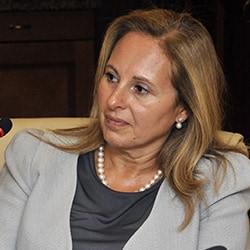 |
Aye Meltem Aci has worked as general manager at Oyak Yatrm Menkul Deerler since June 2001. Her professional carrier started at the treasury and capital markets department of Koç-American Bank in 1986. She worked as an assistant general manager of treasury and capital markets at Midland Bank from 1990 to 1994 and Tekfenbank from 1994 to 1997. She worked as the general manager of Ub Ulusal Investment from 1997 to 2000 and was adviser to the CEO at Strateji Faktoring from 2000 to May 2001. She has more than 20 years of capital markets and investment banking experience. |
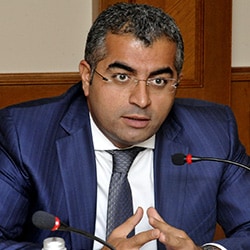 |
Serkan Özcan is assistant general manager and head of economic research and strategy at Odeabank, a position he has held since 2012. He served from 1999 to 2006 as a specialist in the Turkish Central Bank’s banking and financial organizations department, and from 2006 to 2009 as adviser to the chairman in the Banking Regulation and Supervision Agency. From 2009 to 2012 he was chief economist and strategist at VakfBank. |



